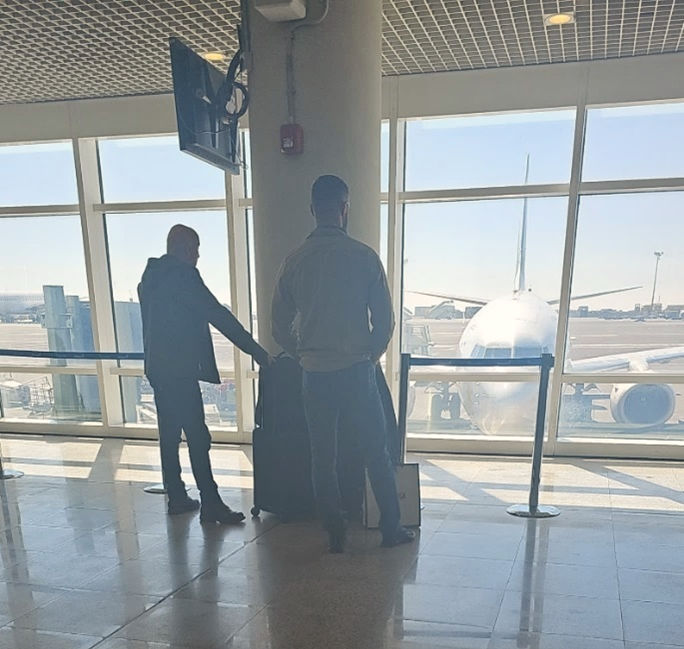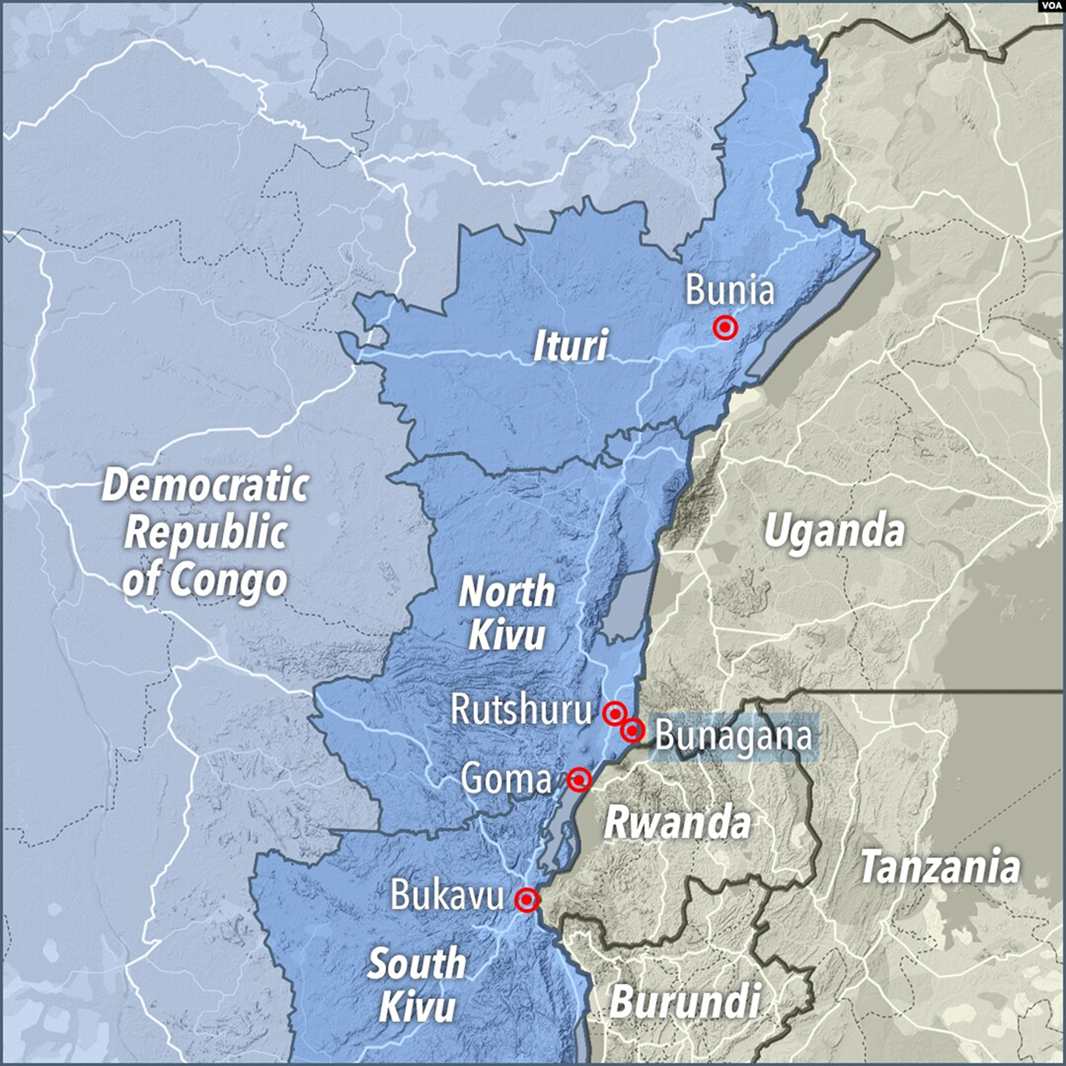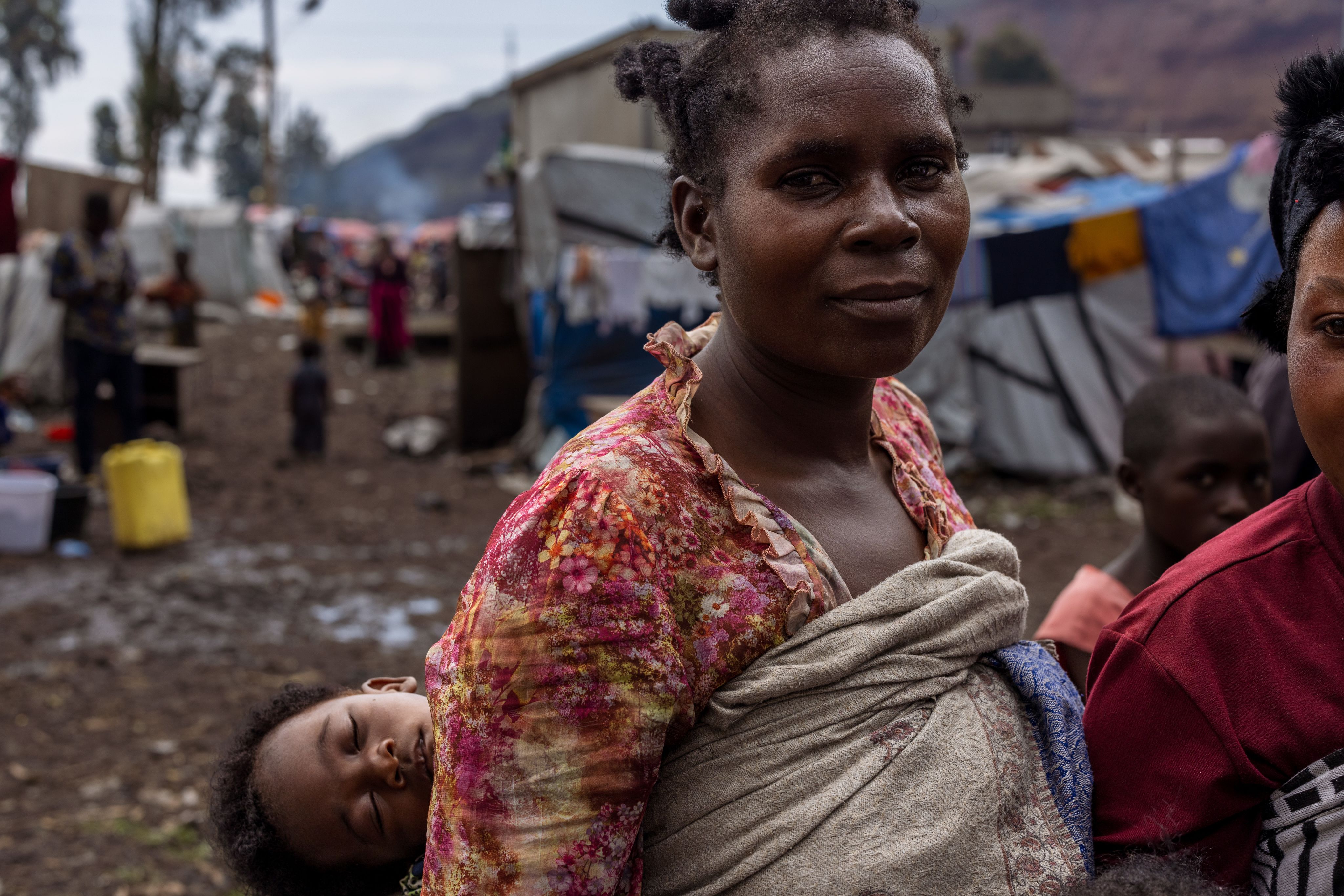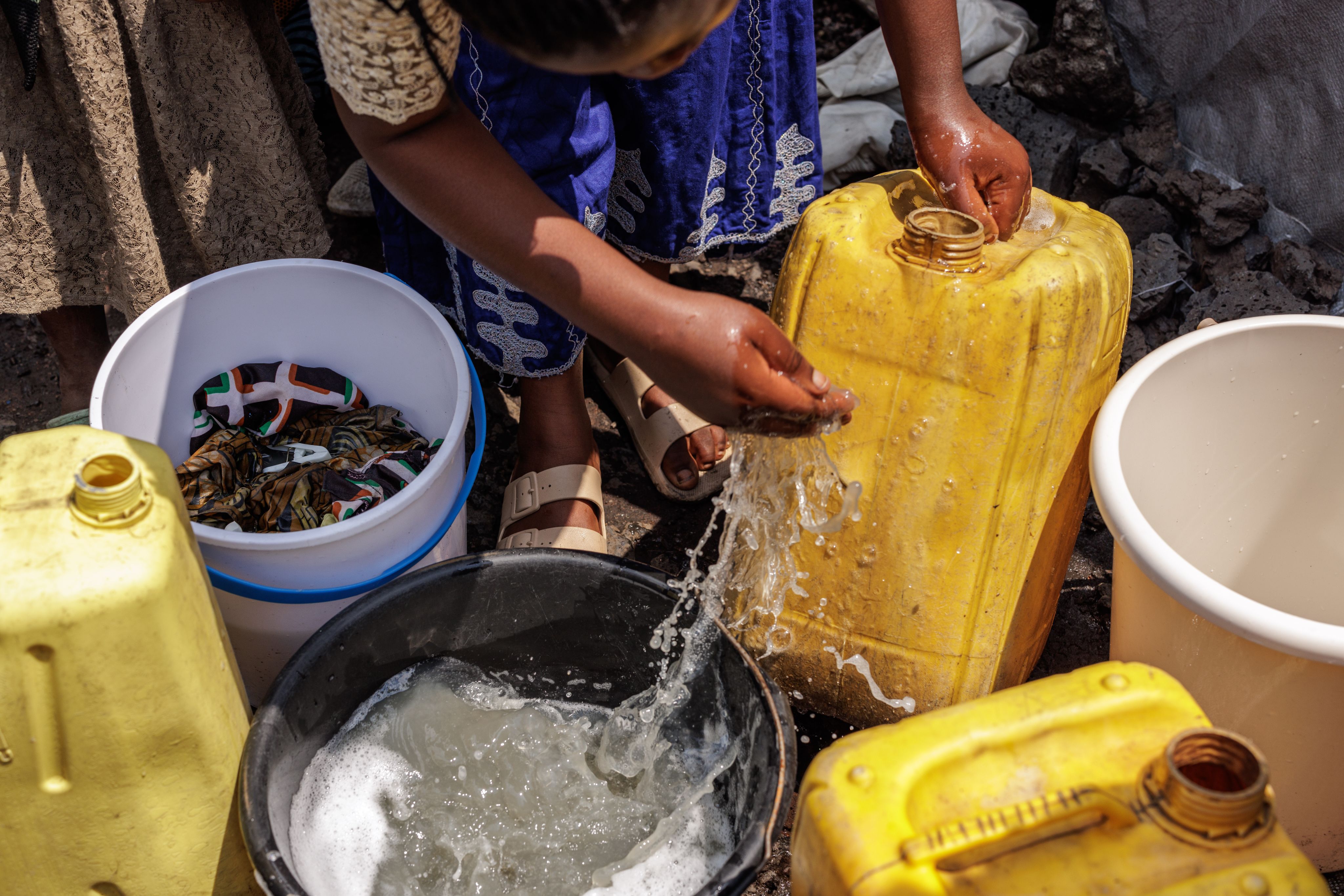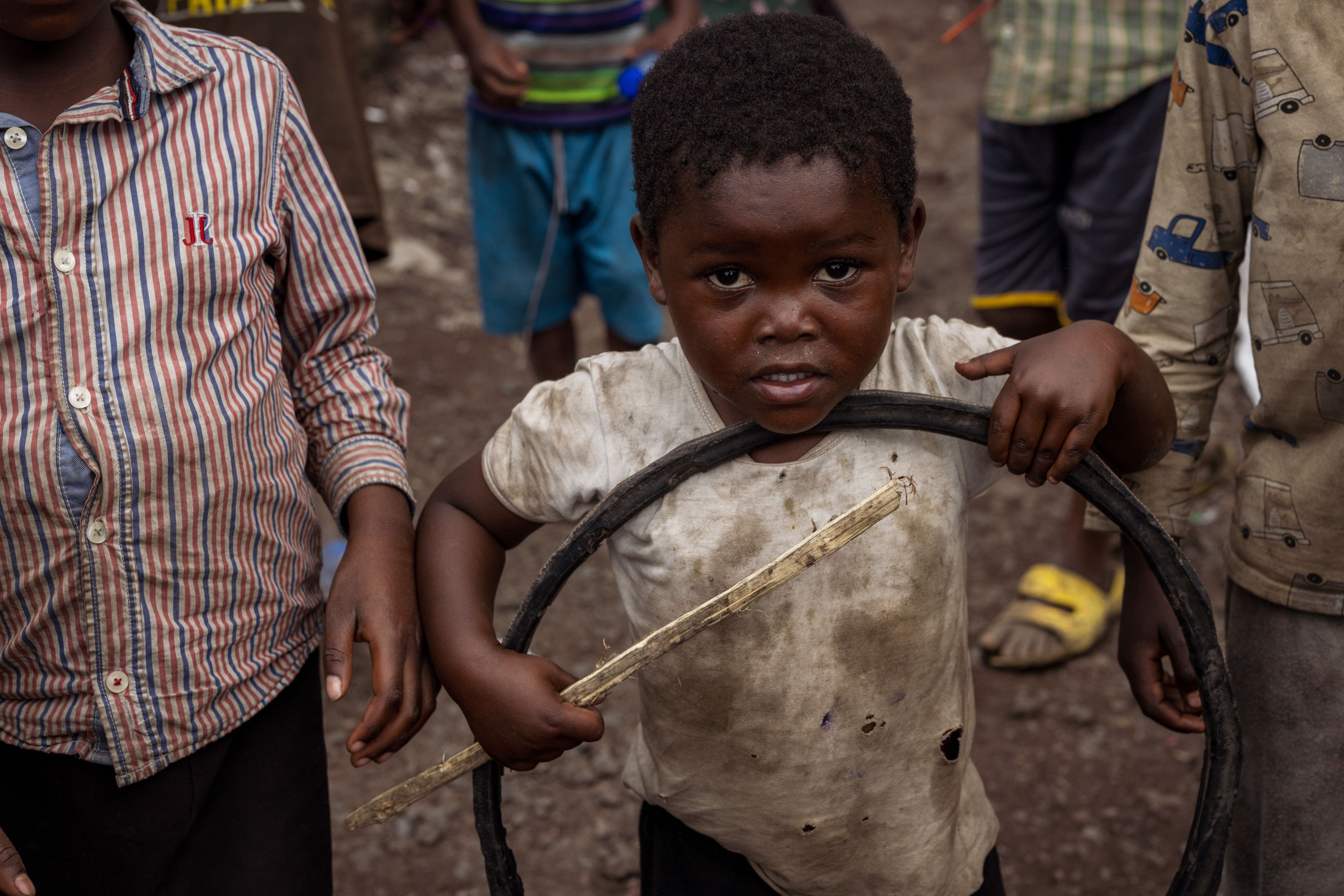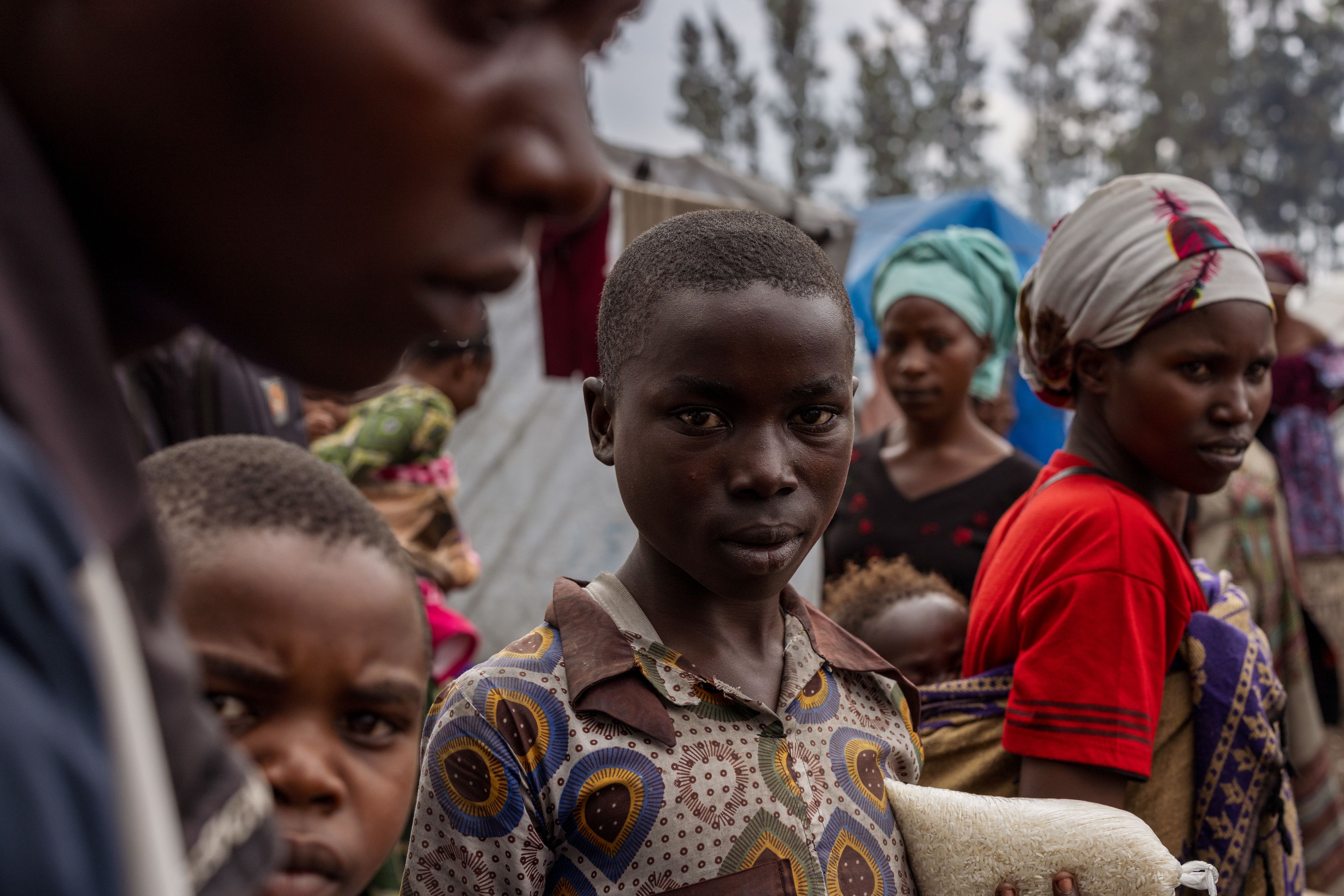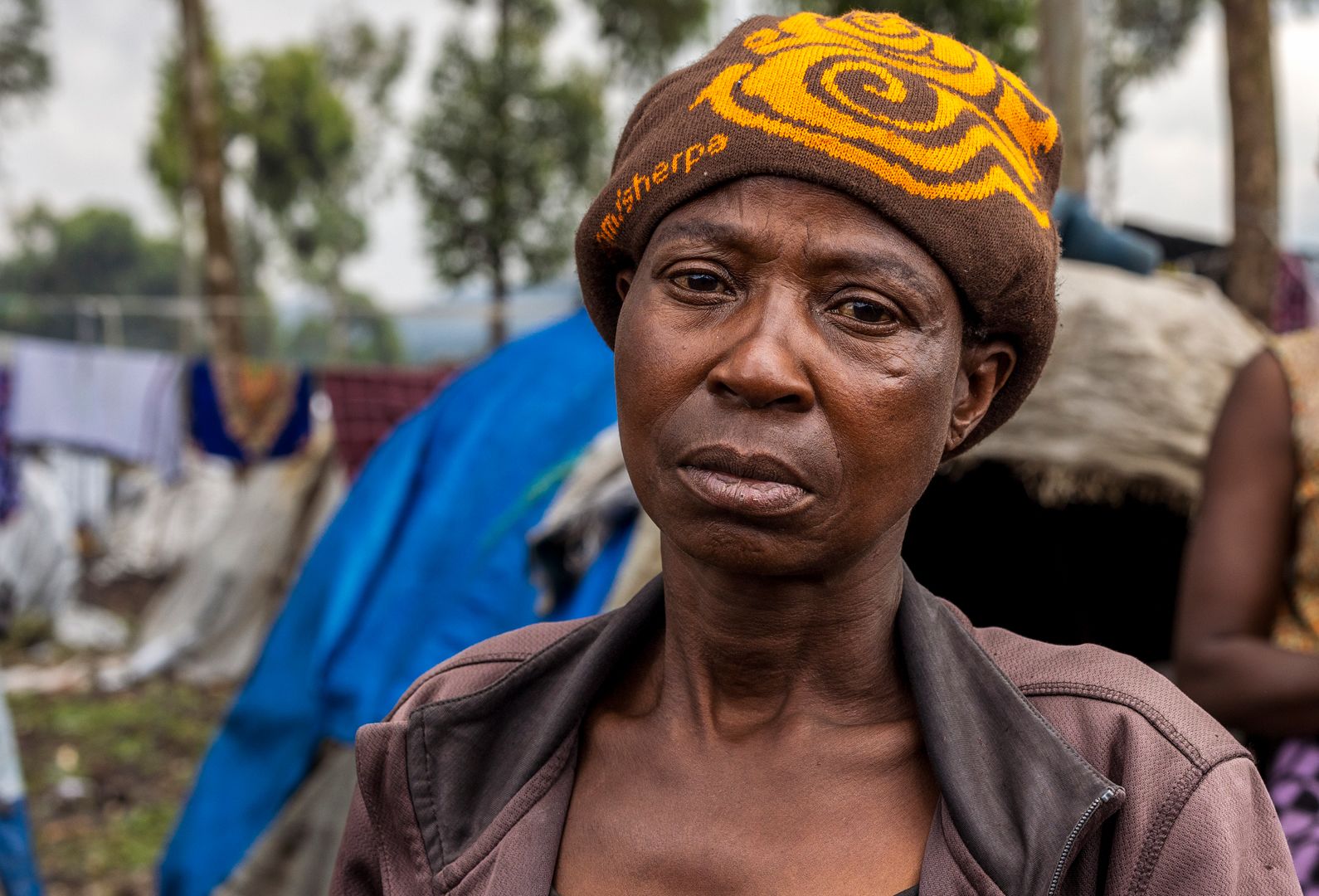The Business
of War:
A Way of Life or Death in The Eastern Democratic Republic of the Congo

North Kivu Province -- Romanian mercenaries led by Horatiu Potra prepare while waiting in the business class line to board the aircraft in Ethiopia. The man nicknamed “The War Machine” is no stranger to conflict having been involved with militaries and mines across the continent since the 1990’s. He’s been accused of illicit diamond dealing, arms trafficking, and ties to the Russian Wagner group, but proof remains vague.
Horatiu Potra (left) waits at the gate in Addis Ababa for the flight to Goma on November 27, 2023.
Horatiu Potra (left) waits at the gate in Addis Ababa for the flight to Goma on November 27, 2023.
When they arrive in Goma, they throw on their bullet proof vests and jump on a military convoy with 50 caliber turrets mounted to the back of a pickup truck. Amped up and high fiving each other along the way, they are excited to continue their airport security contract in eastern Congo.
The airport in Goma is chaotic and a small racket for those on the hustle while liquor is clearly in high demand. Surrounding is an endless supply of UN helicopters, fighter jets, shipping containers, and walls wrapped in barbed wire. Humanitarian vehicles labeled "No Weapons" occupy the streets while men dressed in green camo strapped with AK-47s swift quickly through the nearly impassable diesel fume-soaked roads near the airport.
Nestled at the foothill of Mount Nyiragongo, one of the most active volcanoes in Africa, Goma is built on jagged volcanic rock. It's part of what gives the region its beauty along with Lake Kivu and Virunga National Park. The last eruption was about two years ago, taking the lives of 32 people.
DRC is extremely rich in natural resources and it has long become the target of arm groups looking to extort the land and its people.
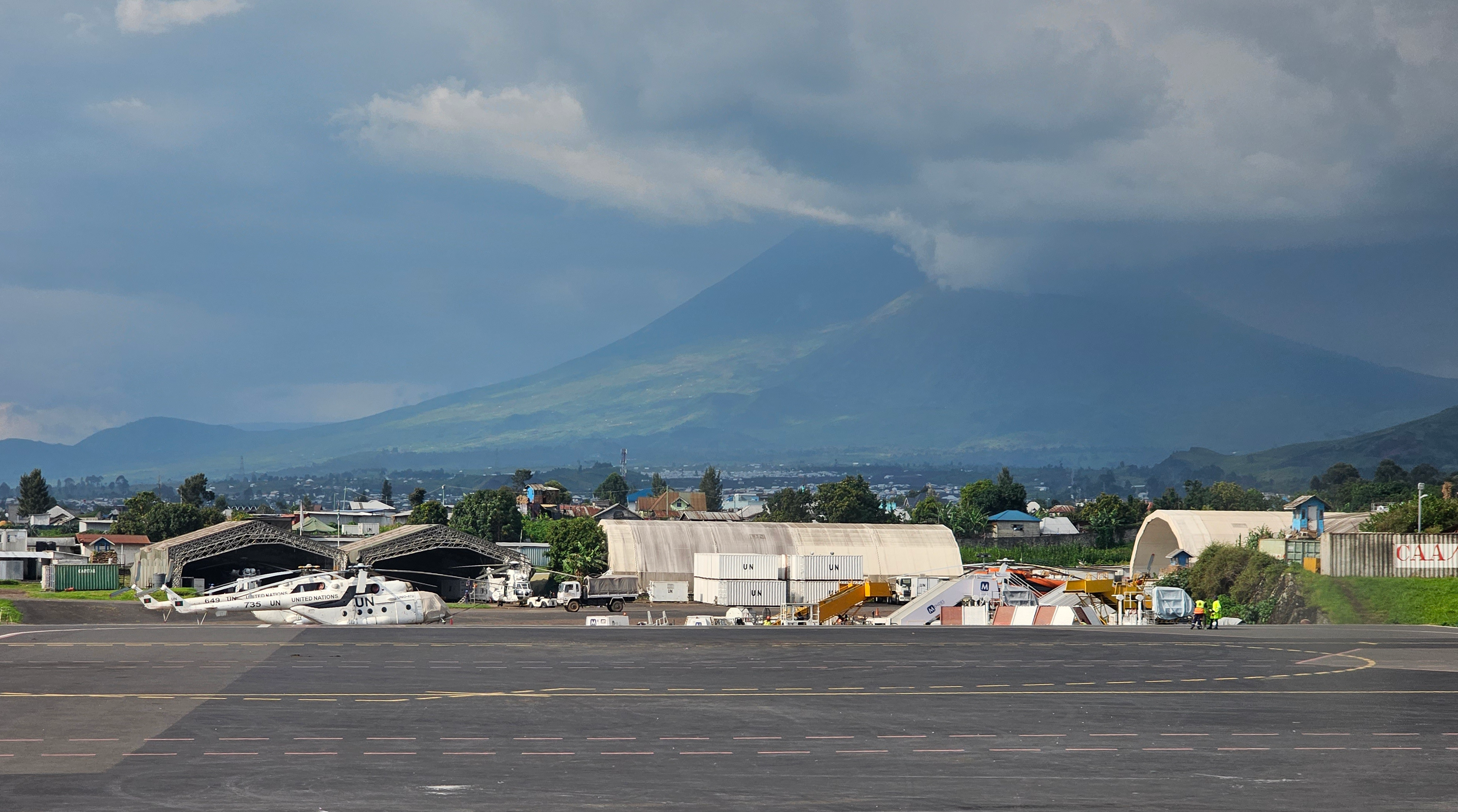
Tensions in Goma are quite high, and the streets are fraught with energy. December 20th is the anticipated presidential election - a sign of hope and hell in this "heart of darkness."
Goma, a city of 2 million people, is encircled by conflict with over 130 active rebel groups operating within the region including ethnic aligned militias, Islamic State (Allied Democratic Forces) and a slew of mercenaries. The 25 year, largely forgotten war in eastern Congo has been the deadliest conflict since World War 2 with over 6 million people killed and displacing nearly 7 million. In the past 6 weeks, over 400,000 people have been displaced due to renewed rebellion by the Rwandan backed, Tutsi led, M23 rebels.
Eastern Congo has been living with the threat of M23 insurgency for over 2 years now. Potra's airport is the single most important piece of infrastructure to keep the city free of rebels. In 2012, Goma was infiltrated by M23 and the airport suffered significant damage. Through peace talks M23 retreated, but the fear of a new attack remains and with good reason.
The city of Goma is currently under a state of siege and a regional conflict is brewing. Inflammatory posts on social media, the personal presence of Potra within the country, and a visit by the international community intelligence services to de-escalate tensions between Congo and Rwanda, make one thing clear, “a new assault on Goma is imminent.”
“A new assault on Goma is imminent.”
Defending the villages outside Goma is the local militia known as the Wazalendo. Up until now and among the local population, it has considered to be a proxy force for the Congolese Military (FARDC).
UN peacekeeping forces have also been operating in the region since 1999. For some of those that live in Congo, peacekeeping and collaborative murder is indistinguishable. The MONUSCO mission in eastern DRC has a budget of $1B annually, but after decades of violence, its scheduled to depart the country at the request of population. There is an ongoing effort to secure Goma and surrounding regions through operation Springbok and to stabilize the volatile region before the election. It is difficult to say how effective the peacekeeping operation has been in the eastern DRC.
The human cost of this conflict..
In Kanyaruchinya at the border of a check point 10km north of Goma sits one of several makeshift internally displaced person camps. The sporadic front line is near and rebels lurk within the boundaries. The victims of violence forced to flee here are struggling with a final attempt at survival. Arriving from the villages of Kibumba and Rutshuru with only the cloths on their back, many in the camp have been living here for over a year and with children. Some of those living in the Kanyaruchinya have large families and as much as 8 children are living under one tent.
Conditions in the camp are fragile and food is distributed by name in alphabetical order. Lack of nutrition is the norm and World Food Program supplies are not adequate. The program funding gap is nearly 80% within the country and 25 million in Congo are facing emergency levels of food insecurity. Intensification of conflict in North Kivu and Ituri province is causing a food crisis and this is well reflected in roadside markets within the city of Goma.
Swollen bellies of children in the camp is a sign of their malnutrition. Kwashiorkor is fairly common and many of the children remain untreated.
Women with infants in the camp need to fight for their food. They need to lie on top of their babies to protect the children and the food. Sometimes the woman here struggle with breastfeeding their children, needing to seek out and beg for food in nearby farms to get the nutrition they require.
People selling goods under the roadside umbrellas don't live in the camp yet profit off those living in misery.

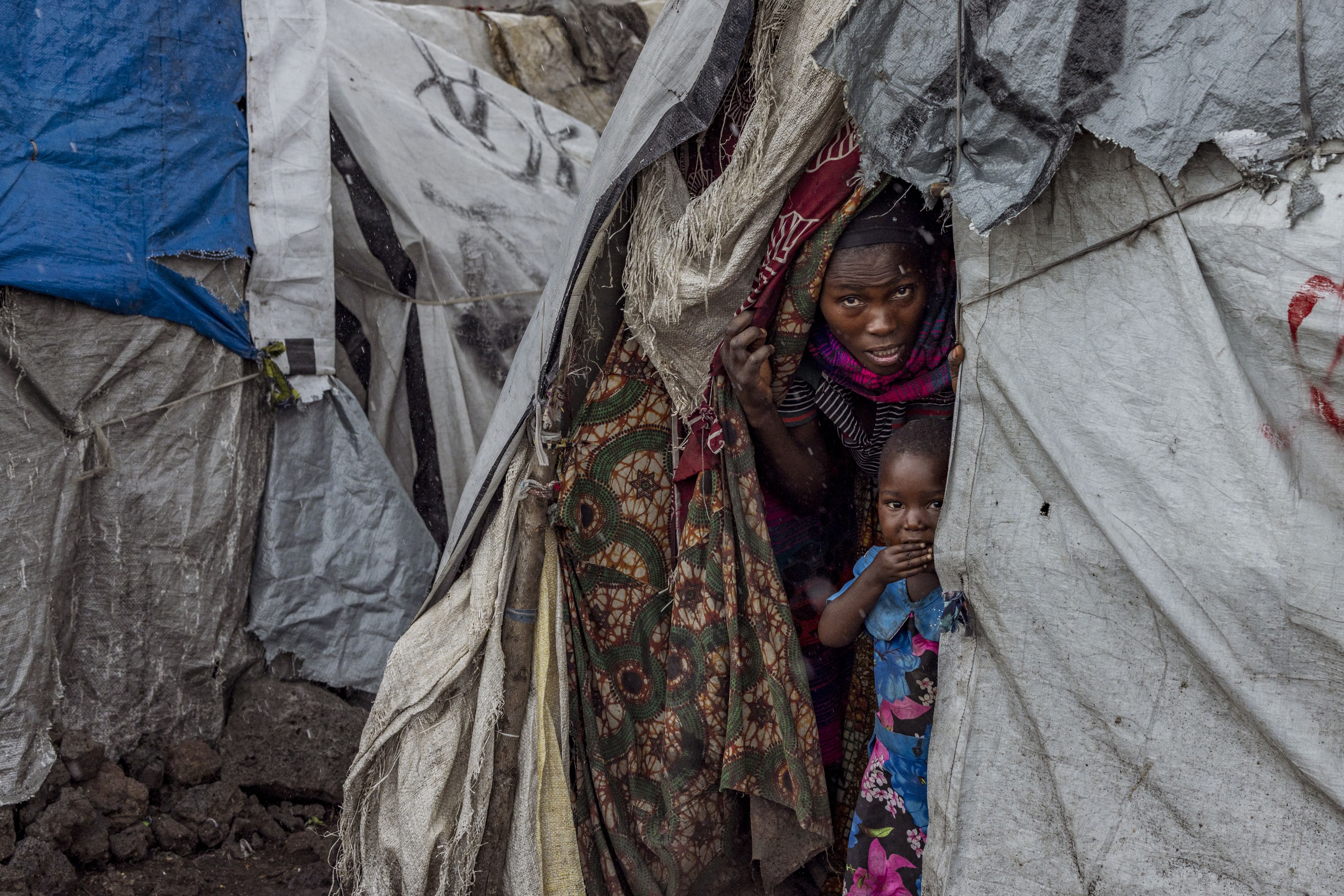
"19 people including children have died from hunger, insufferable illnesses, and violent attacks."
“... MONUSCO is conspiring with M23 rebels."
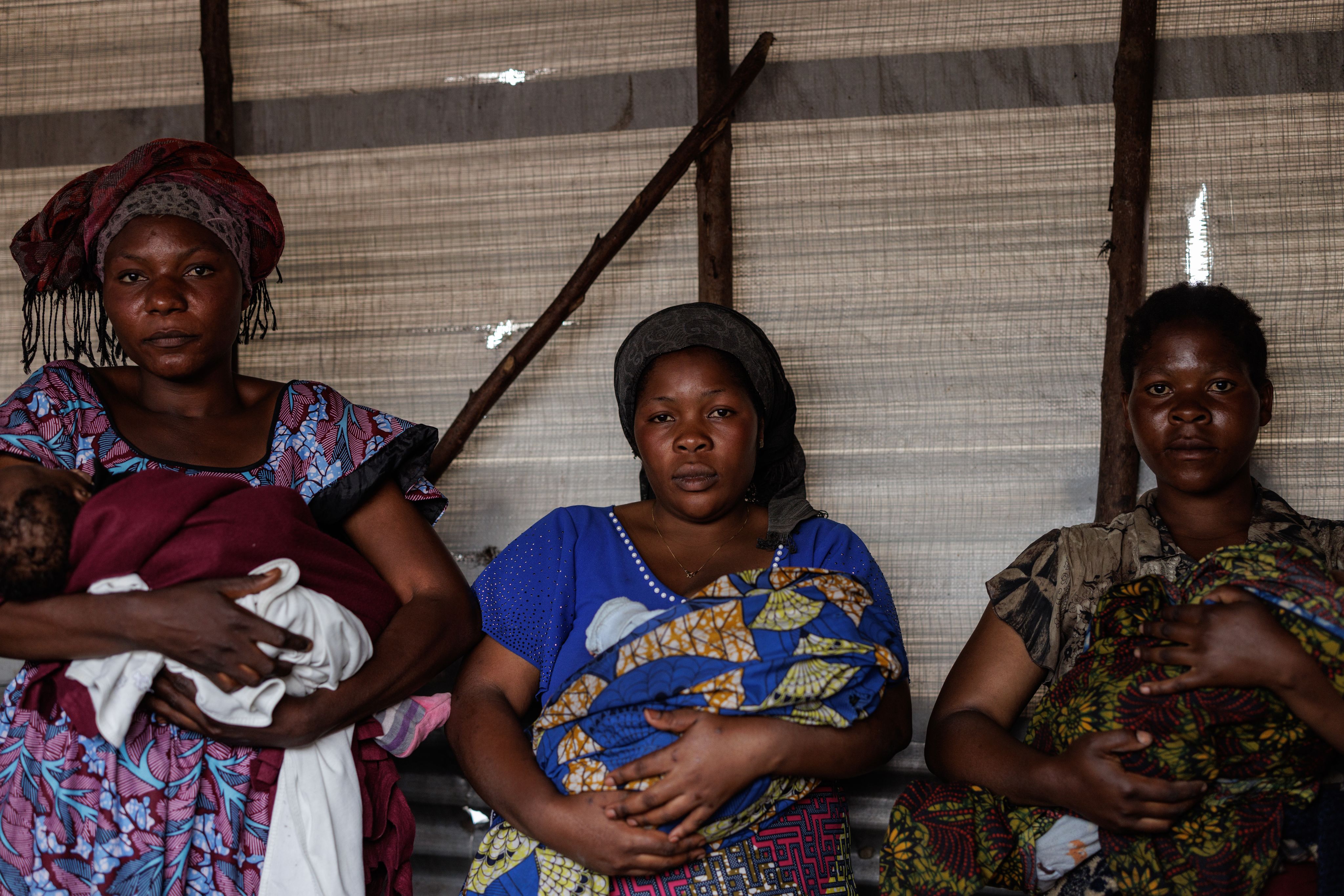
Strong allegations give way to the body language of unmistakable certainty when the women speak to the relationship of the MONUSCO peacekeepers, “According to the local population, MONUSCO is conspiring with M23. The last time there were gunshots, people were running away and when they passed by the peacekeepers, they opened fire. They do not feel safe.”
The allegations against MONUSCO are unverified, but several peacekeepers have been detained in the last few months on the basis of sexual misconduct.
Women in the camp give testimony to their escape from M23 massacres, “If you don’t run away, they will slaughter you. You need to run away. They will kill you with a hammer. Our neighbors houses were bombed.”
Most of the women in the camp gave birth to their children under the tarps, but others needed to flee for their lives from M23 while still pregnant. The environment within the camp is not suitable for giving birth and there is no access to healthcare.
Others speak of tactics used by M23 that include a silent invasion into their villages. “They will show up and make you believe everything is fine. Then when you let your guard down and leave your home, they will shoot you. Bodies were everywhere.”
"It is better to go back to my village, even if there is war. I am suffering here."
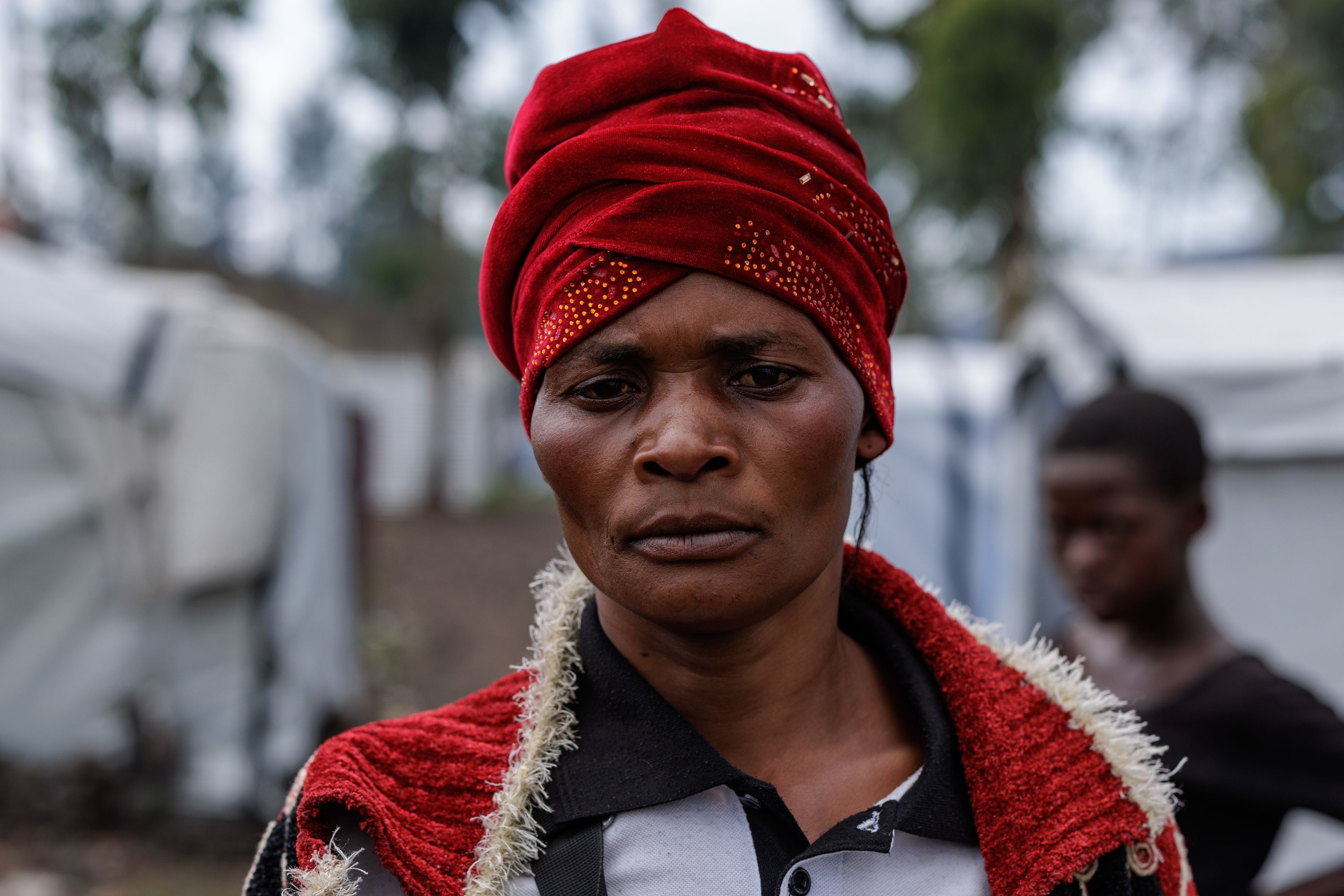
A Cry for Peace
Nothing is clear about the future for those living in the internally displaced camp. The only wish is for a restoration of peace so they can go back to their villages. The UN peacekeepers along with soldiers from the East African Community are set to leave the country - rebel groups including the M23 will seek to fill this void while those profiting from this conflict will continue to perpetuate the humanitarian crisis and the plight of those in need. The living conditions and security situation within the region is reaching severe levels.
"Please make a pitch for us and get this information out there so people know that we are suffering. Please tell our story."
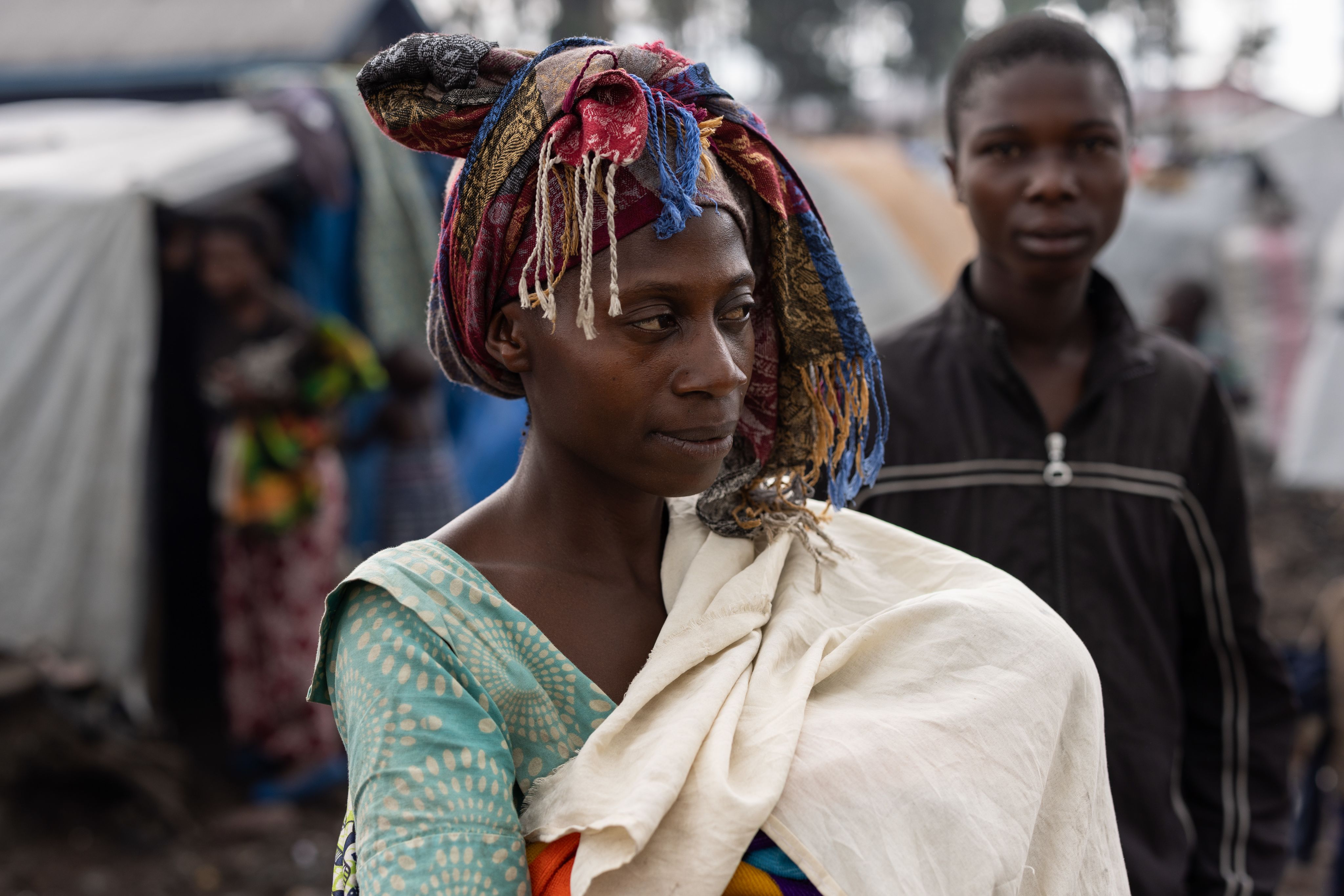
About the Authors:
Alexander Carrigg is an American photographer and freelance journalist documenting issues of historical significance including political unrest, conflict, and humanitarian crisis. AlexanderCarrigg.com
Guylain Balume Muhindo is the CEO of Congo Reporters. He is a freelancer, journalist, video producer, photographer, fixer and translator in the Great Lakes area of eastern Congo. CongoReporters.com
